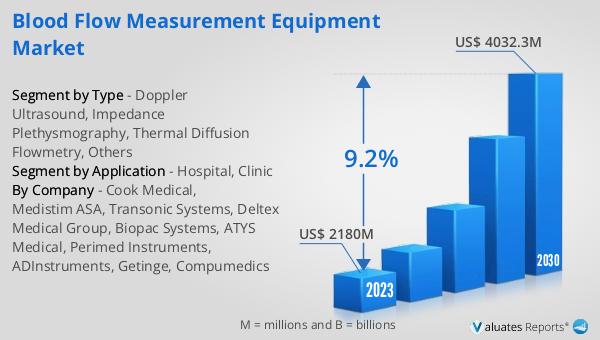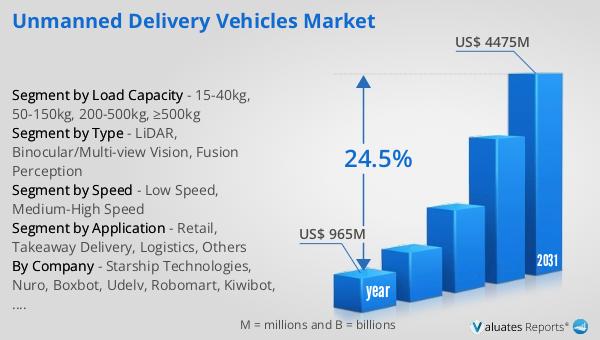What is Global Blood Flow Measurement Equipment Market?
The Global Blood Flow Measurement Equipment Market refers to the industry that produces devices and tools used to measure the flow of blood within the human body. These devices are crucial in diagnosing and monitoring various medical conditions, such as cardiovascular diseases, diabetes, and peripheral artery disease. Blood flow measurement equipment includes a range of technologies like Doppler ultrasound, impedance plethysmography, and thermal diffusion flowmetry, among others. These tools help healthcare professionals assess blood circulation, detect blockages, and evaluate the effectiveness of treatments. The market for these devices is expanding due to the increasing prevalence of chronic diseases, advancements in medical technology, and a growing aging population. As healthcare systems worldwide strive for better patient outcomes, the demand for accurate and reliable blood flow measurement equipment continues to rise. This market is characterized by continuous innovation and the development of more sophisticated and user-friendly devices, making it an essential component of modern medical diagnostics and treatment planning.

Doppler Ultrasound, Impedance Plethysmography, Thermal Diffusion Flowmetry, Others in the Global Blood Flow Measurement Equipment Market:
Doppler Ultrasound, Impedance Plethysmography, Thermal Diffusion Flowmetry, and other technologies play a significant role in the Global Blood Flow Measurement Equipment Market. Doppler Ultrasound is a non-invasive method that uses high-frequency sound waves to measure blood flow velocity. It is widely used in hospitals and clinics to diagnose conditions like deep vein thrombosis, arterial blockages, and heart valve defects. The technology works by emitting sound waves that bounce off moving blood cells, allowing the device to calculate the speed and direction of blood flow. Impedance Plethysmography, on the other hand, measures changes in electrical resistance within the body to assess blood flow. This technique is particularly useful for detecting blood clots and monitoring blood volume changes in limbs. It involves placing electrodes on the skin, which send a small electrical current through the body. The resistance to this current changes with blood volume, providing valuable data on circulation. Thermal Diffusion Flowmetry measures blood flow based on the principle of heat transfer. A small heated probe is placed on the skin, and the rate at which heat is dissipated is used to calculate blood flow. This method is often used in research settings and for specialized clinical applications. Other technologies in the market include Laser Doppler Flowmetry, which uses laser light to measure blood flow in microvascular networks, and Magnetic Resonance Imaging (MRI) techniques that provide detailed images of blood vessels and flow patterns. Each of these technologies has its own set of advantages and limitations, making them suitable for different clinical scenarios. The choice of technology often depends on the specific medical condition being diagnosed, the required accuracy, and the available resources. As the Global Blood Flow Measurement Equipment Market continues to evolve, these technologies are becoming more advanced, offering greater precision and ease of use. This ongoing innovation is driven by the need for better diagnostic tools to manage the increasing burden of chronic diseases and improve patient outcomes.
Hospital, Clinic in the Global Blood Flow Measurement Equipment Market:
The usage of Global Blood Flow Measurement Equipment in hospitals and clinics is extensive and multifaceted. In hospitals, these devices are integral to various departments, including cardiology, neurology, and vascular surgery. Cardiologists use Doppler Ultrasound to evaluate heart function, detect blockages in coronary arteries, and monitor blood flow in real-time during surgical procedures. Neurologists rely on these tools to assess cerebral blood flow, which is crucial for diagnosing conditions like stroke and brain aneurysms. Vascular surgeons use blood flow measurement equipment to plan and execute surgeries, ensuring that blood circulation is adequately restored in affected areas. In clinics, these devices are essential for routine check-ups and ongoing patient monitoring. General practitioners use them to screen for peripheral artery disease, a common condition in diabetic patients. They also help in monitoring the effectiveness of treatments for hypertension and other cardiovascular conditions. The portability and ease of use of modern blood flow measurement devices make them suitable for outpatient settings, allowing for quick and accurate assessments without the need for extensive laboratory facilities. Additionally, these devices are used in specialized clinics, such as those focusing on wound care, where assessing blood flow is critical for determining the healing potential of chronic wounds. The data obtained from these measurements guide treatment decisions, helping healthcare providers tailor interventions to individual patient needs. Overall, the integration of blood flow measurement equipment in hospitals and clinics enhances diagnostic accuracy, improves patient management, and contributes to better health outcomes.
Global Blood Flow Measurement Equipment Market Outlook:
The global Blood Flow Measurement Equipment market was valued at US$ 2180 million in 2023 and is anticipated to reach US$ 4032.3 million by 2030, witnessing a CAGR of 9.2% during the forecast period from 2024 to 2030. This significant growth reflects the increasing demand for advanced diagnostic tools in healthcare. The rising prevalence of chronic diseases, such as cardiovascular disorders and diabetes, is driving the need for accurate and reliable blood flow measurement devices. Additionally, technological advancements are making these devices more accessible and user-friendly, further boosting their adoption in clinical settings. The market's expansion is also supported by the growing aging population, which is more susceptible to vascular diseases and requires regular monitoring. As healthcare systems worldwide strive to improve patient outcomes, the demand for sophisticated blood flow measurement equipment is expected to continue rising. This market outlook underscores the importance of ongoing innovation and investment in this critical area of medical technology.
| Report Metric | Details |
| Report Name | Blood Flow Measurement Equipment Market |
| Accounted market size in 2023 | US$ 2180 million |
| Forecasted market size in 2030 | US$ 4032.3 million |
| CAGR | 9.2% |
| Base Year | 2023 |
| Forecasted years | 2024 - 2030 |
| Segment by Type |
|
| Segment by Application |
|
| Consumption by Region |
|
| By Company | Cook Medical, Medistim ASA, Transonic Systems, Deltex Medical Group, Biopac Systems, ATYS Medical, Perimed Instruments, ADInstruments, Getinge, Compumedics |
| Forecast units | USD million in value |
| Report coverage | Revenue and volume forecast, company share, competitive landscape, growth factors and trends |
